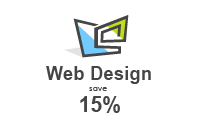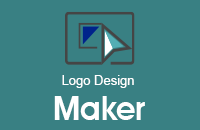LogoBee's Top 10 Logo Design Tips
July 10th, 2011
Over the years, LogoBee has been designing logos and accumulating articles and resources for its clients. Finally, they've released a concise set of logo design tips to help you along with your project, and ensure that you end up with a logo that will perfectly suit your needs. So without further ado, here are LogoBee's top ten tips!
Keep it Simple!
These are probably the best words of advice, and it ties into almost all of our upcoming tips. A complicated logo will not only make your logo difficult to reproduce and maintain, but you will also fail to engage your audience. The logo is the ultimate 'elevator' pitch to your potential clients and business partners. You don't have time to recite your entire business plan in an elevator pitch, and the same concept applies to corporate logo design.
Sometimes when a logo design isn't working out right, there will be an inclination to add elements and complexity. Often times, it's better to start over with a new concept or remove distracting elements rather than add them.
Simplicity isn't always an easy thing to achieve, as you don't want your logo to appear too boring or conservative. This is why at the end of the day it's best to leave it to the design professionals!
Engage your Audience
The logo design should above everything entertain and engage your audience. Your logo should not be so literal that the message is spelt out for them. They should be given the opportunity to discover the meaning and intention of your logo themselves. If people are able to discover the 'trick' of your logo within a reasonable amount of time, this will help to create a memorable and entertaining experience between you and your audience.
Too much abstraction will on the other hand work against you. If the logo is too obscure, the message that you are attempting to communicate will be lost, and so will your potential client. Remember, today's consumer culture is accustomed to very intense and stimulating media, and therefore you cannot be too demanding on your audience either.
Logo Longevity - Think Ahead!
The durability and longevity of a logo is worth considering. Although it's impossible to see into the future, it is useful to picture your company 10-15 years down the road, and think about what kind of products and services it will offer, if any at all! Even the strongest companies update their logo every 15 years or so, but often the changes will be subtle in nature. Very seldom will they take on a radical re-design.
There are many long-standing companies whose logos have stood the test of time. Type-based logos are good for this. The IBM logo is a great example. They offer a variety of products and services on an international level, and also provide research, design and consulting services. They've succeeded in communicating all of this through their logo, but we think they are due for an update very soon!
For small start-up companies, it may not be the end of the earth if you decide to change your logo after even a few years, depending on what transpires with your company. But it's always nice when a logo design is able to stand the test of time.
Vector is Better
Although it's tempting to use detailed illustrations and complex 3d effects in a logo, chances are that it will not serve you well. Clean, crisp lines with very limited colors are almost always more effective than an illustration or complex 3d rendering. A well-drawn vector-based logo will provide you with the contrast and balance that is so important in logo design. New capabilities in vector based programs can now give you the illusion of a 3d effect without losing contrast, using tricks such as the canter effect.
Adaptability - Be Ready for Change
Your logo should be flexible enough to adapt to every business situation. If a logo is too literal or specific, you may have a hard time using it when catering to different markets.
Generally speaking, the best thing for small business start-ups is to have an icon and logo-type designed at the same time. This will allow you to use the logo as a stand-alone image, or use it along with the type-font name as well. Often times, companies will use only the icon on its products and packaging materials. This is a common practice among software companies and book publishers.
Make it Memorable
A great logo design will imbed itself into ones sub-consciousness. This can happen for a variety of reasons, but for a logo to be memorable it needs to use simple lines and be very easy to recall from memory. A good test to ensure that your logo design is memorable is to show it to a friend and ask him/her to retrace it a week later. A good design should use a recognizable shape or element for it to be easily remembered.
Relevance - Keep your Products and Services in Mind
A memorable logo is great, but it should also get your customers to start thinking about the products or services that you offer. You should ensure that the logo relates to your business in some shape or form. Yes, the monkey can sell just about anything from cigarettes to cell phones, but there's a limit! Isn't there?
Choose your Colors Wisely
Colors can play a very important role in logo design as they can illicit different feelings and emotions from us. Interpretations of color may vary depending on age, gender, and cultural demographics, so your choices of color should be carefully considered depending on your target market. Also, colors tend to follow trends, just like in fashion. So a new, vibrant company may want to follow the current trends, whereas a bank may want to stay with a more conservative color set that will work well for them over a long period of time.
Try to keep your selection of colors down to two or three. Too many colors will increase your cost of production and make it more difficult to reproduce.
One interesting idea that we've seen used is to change the color of the logo on things like business cards and stationery depending on the market segmentations of the clientele.
Keep it Unique
This should be straightforward. You want to be sure that your company is easily identified among your industry and competitors. Be sure to carefully research your industry and target market before embarking on a logo design. You need to know and understand the common styles of your industry, but you also need to make sure that you don't infringe on anyone else's trademarked logo.
Versatility Pays Dividends
One of the most important attributes of a good logo design is versatility. You want to portray a consistent image across all of your marketing materials, including signs, letterhead, business cards, products lines, and web sites. Often times, a complicated logo design will work fine on a website or billboard, but when you shrink it down to fit on a pen or coffee cup, the illustration or lettering will become illegible. Your logo should also work well in black and white.
You may often find that start-up companies and even well-established law firms will not consistently brand their logo across all their marketing materials. For example, they may have their logo on the front door of their office, but will end up using something different (or nothing at all!) on their website. In order to build brand recognition you need to market your logo and image as consistently as possible. Be sure that when you're having your logo designed that you receive all the file formats necessary for use in your various marketing channels.






